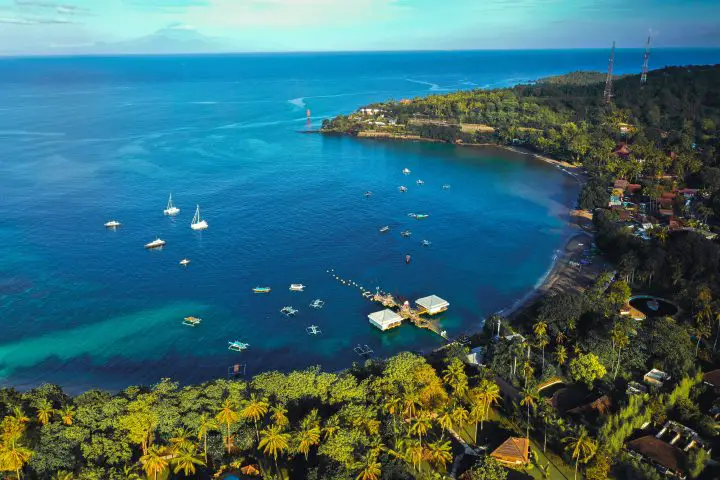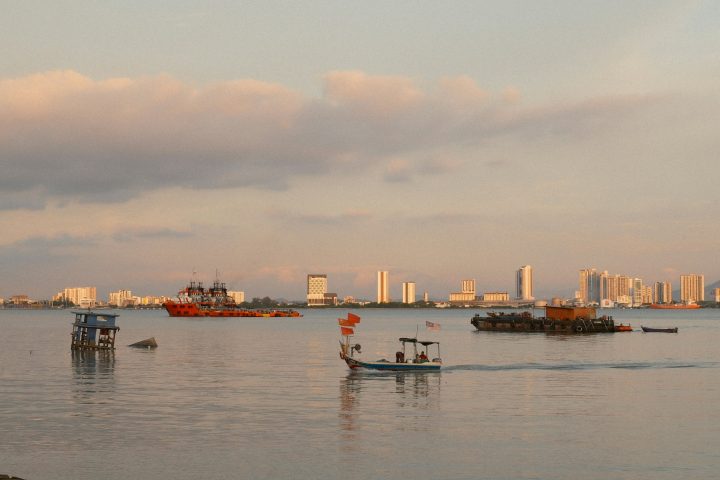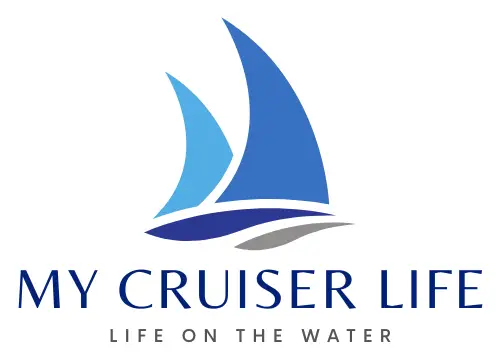Record-high housing costs are driving thousands toward floating homes as the ultimate financial escape. As rent hits $3,000+ monthly and mortgages become unattainable, discovering the cheapest place to live on a boat offers real financial freedom. From Malaysia’s $200 monthly marina fees to Texas’s affordable Gulf Coast slips, liveaboards are slashing housing expenses by 70% while gaining waterfront views that would cost landlubbers millions.
This isn’t about roughing it on some leaky dinghy. Smart boaters find first-world amenities at third-world costs – houseboats with full kitchens, reliable marina services, and the ultimate freedom to relocate your entire home whenever wanderlust strikes.

Table of Contents
- Factors That Make a Place Cheap to Live on a Boat
- Florida Keys, USA
- Bocas del Toro, Panama
- Marina del Rey, California
- Langkawi, Malaysia
- Gulf Coast, Texas, USA
- The River Delta Region, Vietnam
- Eastern Greece (Ionian Sea Islands)
- The Bahamas (Exuma Cays)
- Turkey (Turkish Riviera/Turquoise Coast)
- Finding Your Perfect Floating Home Base
- FAQs – Cheapest Place to Live on a Boat
Factors That Make a Place Cheap to Live on a Boat
Figuring out what makes boat living cheap helps you find the best deals and dodge budget surprises. Marina slip fees usually eat up most of your monthly budget – fancy spots like Marina del Rey can hit you for $35+ per foot, while places like Malaysia charge under $200 total regardless of boat size. Mooring balls and anchoring for free can save you tons compared to slips.
Some places tack on extra liveaboard fees – Key West adds $43 per person monthly, while other spots don’t charge anything extra. How far your money goes depends heavily on local prices. Food, booze, and boat repairs in places like Turkey cost way less than back home, but island spots often charge premium prices for everything.
Weather matters for your wallet too – hurricane zones mean evacuation costs and moving around seasonally. Good shore power and internet keep your bills predictable. The cheapest places usually combine low marina fees, simple rules, cheap local costs, and decent boat services all in one spot.
Florida Keys, USA
Living aboard in the Florida Keys offers the quintessential tropical American dream, complete with year-round sunshine and crystal-clear waters. Key West features monthly slip fees around $29.12 per foot plus a $43.60 per person live-aboard fee, making a 35-foot boat roughly $1,000+ monthly. Boot Key Harbor offers significant savings with mooring balls around $300 monthly for boats up to 65 feet, complete with a tight-knit cruising community featuring daily radio nets and potluck dinners.
Monroe County regulations require specific permitting and designated liveaboard areas. Some marinas have lengthy waiting lists while others don’t allow living aboard at all. The regulations mean enforcement is real – you can’t just anchor anywhere, but this structure provides stability for rule-followers.
Pros:
- Year-round warm tropical climate
- Well-established liveaboard communities
- Excellent marine services and chandleries
- No language barriers or currency issues
- Protected waters are ideal for smaller boats
Cons:
- High slip fees and marina costs
- Hurricane season evacuations are required
- Tourist crowds affect daily life
- Strict regulations limit flexibility
- Limited anchoring options outside designated areas
Related: Cheap Catamaran: Affordable Cruising Catamarans to Get You Sailing Now!
Bocas del Toro, Panama
Panama’s Caribbean coast delivers one of the Americas’ most affordable boat living experiences, where dollars stretch incredibly far. A retired couple reported total monthly expenses of just $820 ($410 per person), including transportation, food, and maintenance. The average expat cost of living runs $1,500-$2,000 monthly, giving perspective on how affordable boat life becomes here.
Panama uses the U.S. dollar and features straightforward cruising permits, with English widely spoken in expat communities. You’ll find both titled properties and Rights of Possession options, with many choosing off-grid living using solar and rainwater systems. Informal mooring options mean freedom from expensive marina contracts, though research holding ground and weather patterns carefully.
Pros:
- Extremely low cost of living
- U.S. dollar eliminates exchange concerns
- Friendly visa policies and simple permits
- Strong expat community support
- Beautiful Caribbean waters and tropical lifestyle
Cons:
- Limited marine services for complex repairs
- Remote location makes parts expensive
- Basic medical facilities
- Internet infrastructure can be unreliable
- Hurricane risk during storm season
Marina del Rey, California
Marina del Rey puts you in Southern California’s boating heart while avoiding LA’s astronomical rent prices. This massive man-made harbor offers urban convenience with waterfront lifestyle, though you’ll pay premium prices for the sophisticated marina experience.
The harbor anchors North America’s largest man-made small-craft facility, surrounded by luxury residences, trendy restaurants, and high-end shopping. County Code 19.12.1110 requires live-aboard permits to be issued only with dockmaster authorization. Cost of living stands at 212% of the national average, with housing costs 335% higher, but many liveaboards find total expenses favorable compared to equivalent waterfront apartments.
California’s comprehensive regulations require seaworthiness compliance, approved sanitation systems, and dockmaster proof. The regulatory environment maintains high marina standards but demands patience and paperwork for budget-conscious boaters.
Pros:
- Prime urban location, accessing Los Angeles attractions
- Excellent marine facilities and professional services
- Year-round boating weather
- Secure marina environment with strong community
- High-quality healthcare and emergency services
Cons:
- Very high slip fees and living costs
- Strict regulations and competitive permits
- Urban noise disturbs the peaceful water lifestyle
- Limited anchoring alternatives to expensive slips
- Air quality issues in metropolitan areas
Langkawi, Malaysia
Malaysia’s duty-free island paradise combines low living costs, excellent infrastructure, and sailor-friendly policies. Langkawi has positioned itself as Southeast Asia’s premier budget boating destination, attracting cruisers wanting first-world amenities at third-world prices.
Mooring rates are RM542 monthly for boats up to 12 meters, RM677 for larger yachts, including dinghy landing, showers, toilets, wi-fi, and yachters’ lounge access. Monthly mooring and maintenance costs around $200 represent annual expenses that many U.S. marinas charge monthly.
Duty-free status means alcohol costs half mainland prices, extending to electronics for significant equipment savings. Monthly living costs range $1,075-$4,100, providing flexibility from modest to luxurious lifestyles while maintaining substantial Western cost savings.
Pros:
- Extremely low mooring and living costs
- Duty-free status provides significant savings
- Excellent marine facilities and services
- English is widely spoken in tourist areas
- Strategic location for Southeast Asian exploration
Cons:
- Monsoon season brings heavy rains
- Limited healthcare compared to Western standards
- Bureaucratic requirements for extended stays
- Distance complicates parts and services
- Cultural adjustments required for long-term living

Gulf Coast, Texas, USA
Texas’s Gulf Coast represents America’s best-kept secret for affordable liveaboard living, offering lower slip fees, fewer regulations, and calmer waters than traditional boating destinations. The region’s laid-back attitude and practical marina management appeal to budget-conscious boaters.
Corpus Christi Marina provides 560+ wet slips just steps from downtown restaurants and nightlife as the Texas Coast’s only major downtown marina. Slip fees around $600 monthly for 30-foot boats represent significant savings compared to Florida or California. Galveston and Port Aransas offer various pricing tiers, with covered slips including lift access around $450-500 monthly.
Texas emphasizes safety and environmental protection without excessive bureaucracy, making lifeboard establishment easier. Calm waters and fewer restrictions translate to lower insurance costs and simplified permitting.
Pros:
- Very affordable slip fees and living costs
- Minimal regulatory bureaucracy
- Calm protected waters are ideal for comfortable living
- Easy access to major cities
- No state income tax
Cons:
- Hurricane season requires serious storm preparation
- Hot, humid summers are uncomfortable without AC
- Limited year-round cruising destinations nearby
- Muddy water and industrial shipping traffic
- Potential for severe weather, including tornadoes
The River Delta Region, Vietnam
Vietnam’s Mekong Delta offers perhaps the world’s most affordable boat living, where traditional water communities have thrived for centuries. This isn’t luxury cruising – it’s authentic river life where a few hundred dollars monthly provides a comfortable floating existence in culturally rich waterways.
The nine-dragon river system homes 20 million people, and many maintain traditional water lifestyles. Floating markets like Cái Răng feature vendors living permanently aboard boats with complete family quarters. The region offers stilt houses on bamboo poles and floating houses on pontoons or oil drums.
Market trading runs from 4 AM to lunch, with vendors hoisting product samples up flag poles. Multi-generational boat communities work daily markets with weekend family participation. Ultra-low costs come with significant trade-offs: water pollution from pesticides, saltwater intrusion, and limited medical facilities.
Pros:
- Extremely low cost with authentic cultural experience
- Rich traditional water-based community lifestyle
- Abundant fresh food and local markets
- Minimal bureaucracy and regulations
- Unique Asian river culture opportunity
Cons:
- Significant water pollution and sanitation challenges
- Very limited medical facilities
- Language barriers require major adaptation
- No formal marina services or infrastructure
- Basic living conditions without modern conveniences
Related: The 12 Best Liveaboard Boats Under 30 Feet
Eastern Greece (Ionian Sea Islands)
Greek islands offer European charm and infrastructure at surprisingly affordable prices, especially beyond tourist-heavy Cyclades to the lush Ionian archipelago. Traditional village marinas and stunning anchorages provide authentic Mediterranean sailing without premium destination costs.
Lefkada connects to the mainland via a causeway and a floating bridge, maintaining island character while offering accessibility. The area provides short sails, perfect weather, hidden bays with cypress and olive trees, plus sleepy fishing villages with traditional tavernas. Local running costs, including marina fees and taxes, are around €80 per person, which covers damage deposits and charter packs.
Corfu features a multicultural character with Eastern/Western influences, plus Italian cultural ties evident in Venetian architecture. Villages like Lakka offer vibrant communities with shallow waters, bars, and tavernas representing quintessential Greek charm.
Pros:
- Reasonable costs compared to other European destinations
- Excellent sailing conditions with reliable weather
- Rich cultural heritage and historical attractions
- Good marina infrastructure and services
- English is widely spoken in boating areas
Cons:
- Higher costs than developing destinations
- Crowded during the peak summer season
- EU bureaucratic regulations and paperwork
- Limited winter cruising due to weather
- European pricing for fuel and provisions
The Bahamas (Exuma Cays)
The Bahamas delivers the ultimate tropical liveaboard experience just 50 miles from Florida’s coast, where crystal-clear turquoise waters and endless protected anchorages create a cruising paradise. The Exuma chain stretches 120 miles through pristine waters, from bustling Nassau Harbor to remote uninhabited cays.
Staniel Cay Yacht Club anchors the cruising community with famous swimming pigs, while countless protected bays offer free anchoring with excellent holding. Nassau Harbor provides full marina services with slips $20-35 per foot monthly, though most cruisers anchor freely.
Monthly expenses range $500-800 for anchoring minimalists to $2,000+ for marina comfort. Fuel and provisions cost significantly more than mainland US due to import duties, but accessing Earth’s most beautiful waters without passport complications for Americans makes the premium worthwhile. Georgetown’s annual regatta creates temporary floating cities with organized activities and legendary beach parties.
Pros:
- World-class tropical waters with excellent visibility
- Hundreds of protected anchorages with reliable holding
- Strong, established cruising community with regular gatherings
- No visa requirements for US citizens
- Exceptional snorkeling, diving, and fishing opportunities
- Easy access from Florida’s east coast
Cons:
- High fuel and provision costs due to import duties
- Hurricane season requires evacuation or secure storage
- Shallow waters demand careful navigation and local knowledge
- Limited medical facilities outside Nassau
- Crowded popular anchorages during peak season
- Expensive marina fees when docking is required
Turkey (Turkish Riviera/Turquoise Coast)
Turkey’s Mediterranean coastline offers exceptional value for European liveaboard cruising, where ancient ruins meet modern marina facilities against pine-covered mountains and crystal-clear bays. The Turkish Riviera provides 300+ days of annual sunshine, excellent infrastructure, and surprisingly affordable extended Mediterranean living.
Bodrum Marina and D-Marin Turgutreis offer world-class facilities with monthly rates €300-600, depending on boat size and season, with significant winter discounts. The favorable exchange rate makes everything remarkably affordable – restaurant meals €5-15, marine services at a fraction of Western European prices, and fresh local provisioning that transforms cooking aboard into a cultural adventure.
Turkish waters feature excellent holding in numerous protected bays with free anchoring near coastal villages. The combination of ancient sites, stunning natural beauty, and warm Turkish hospitality creates unmatched cultural experiences. EU citizens enjoy visa-free 90-day stays, while long-term residence permits accommodate extended visits.
Pros:
- Exceptional value with favorable exchange rates
- Excellent marina facilities and marine services
- 300+ days of sunshine with reliable weather patterns
- Rich cultural heritage and historical attractions
- Warm, welcoming local communities
- Excellent holding in numerous protected anchorages
- High-quality, affordable local cuisine and provisioning
Cons:
- Language barriers outside tourist areas
- Bureaucratic requirements for extended stays
- Summer crowds in popular destinations
- Limited winter sailing due to cooler temperatures
- Distance from home countries complicates parts/service
- Political considerations may affect some visitors
- Earthquake risk in certain coastal regions
Finding Your Perfect Floating Home Base
The cheapest marina fees don’t always equal the best deal. Weather can make or break your wallet – Vietnam’s rock-bottom costs won’t matter if you’re melting without AC. Access matters too – those bargain Turkish bays aren’t so cheap when you’re shipping engine parts from halfway around the world.
The community’s huge. Being stuck solo when your bilge pump dies? No thanks. Places like the Texas Gulf Coast nail the sweet spot – decent prices, minimal red tape, and helpful neighbors who know boats.
The real winners? Malaysia’s first-world marinas at third-world prices, Panama’s dollar-friendly cruising, and Turkey’s Mediterranean vibes without the European price tag. Your perfect spot balances slip fees against hidden costs, amenities against freedom, and savings against sanity. Sometimes, paying a bit more gets you way more value.
FAQs – Cheapest Place to Live on a Boat
Where is the cheapest place to live on the ocean?
The most affordable oceanfront living is typically found in parts of Mexico (like Yucatan), Central America (Belize, Nicaragua), Southeast Asia (Philippines, Thailand), and some Eastern European coastal areas (Bulgaria, Romania). These locations offer significantly lower cost of living while maintaining ocean access, though amenities and infrastructure vary considerably.
Where is the best place to live on a boat?
Popular boat living destinations include the Caribbean (stable weather, island hopping), Mediterranean (rich culture, marinas), Pacific Northwest (protected waters, communities), and Florida Keys (year-round boating, infrastructure). Consider factors like weather patterns, marina availability, costs, healthcare access, and visa requirements when choosing your location.
What is the best boat to live on full time?
Catamarans offer excellent liveaboard space with stability and shallow draft. Trawlers provide comfort and fuel efficiency for cruising. Sailboats like Island Packet or Hallberg-Rassy offer seaworthiness and self-sufficiency. Choose based on your sailing experience, budget, desired amenities, and cruising plans. Minimum 35-40 feet recommended for comfort.
